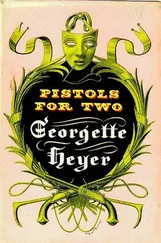It did not take long for the obelisk to capture the attention of a pair of academics from our university, an anthropologist and a historian, both renowned for their work at home and abroad, and for their books, considered by others in their fields to be excellent. The two traveled to the nearby village and were dismayed to find that the obelisk was composed of poured concrete. Furthermore, the anthropologist, upon walking out behind the barn to urinate, discovered the plywood molds the farmer had used to make the obelisk, and surreptitiously took photos of them.
The professors’ exposé was received, to their surprise, with derision, and our own local paper proclaimed the farmer a folk hero, running a front-page story on the man and his creation that included a large color photograph of the two. In fact, the professors’ attempt to discredit the farmer only seemed to fuel his popularity. When the professors persisted in their smear campaign, a protest was staged outside their building, in which students and local residents alike demanded their dual resignation.
Mortified, the professors begged the protesters to listen to reason. They had meant no harm, they said; they only wanted to set the record straight. The farmer, after all, had lied.
The protesters, however, replied that the farmer was nice, whereas the two professors were spoilers. Upon hearing this, the professors gave up their campaign, and the protesters left them alone. Today, the farmer is a local celebrity, much loved by the residents of our county, while the professors, abhorred throughout the region, have continued their careers in much the way they had before the obelisk was discovered.
On a trip to the city, we took in an art exhibition that featured, among other things, a videotape of an artist painting yellow lines on the city’s streets with a hand-propelled industrial line-painting machine. The lines he painted did not demarcate lanes of traffic or parking spaces; rather, they took the form of geometric designs of no apparent utility. The lines veered around stationary cars or passing pedestrians, and traced the outlines of oil stains and puddles. In an accompanying printed statement, the artist referred to the lines as “drawings.” The video was filmed from a high window above the street, and the time and date flashed incessantly in the lower right-hand corner of the screen.
It happened that the artist was present at the exhibition, and he told us that not once in his years of line-painting artistry had he been caught, or even questioned, by city officials for what was clearly an act of vandalism. He said that motorists frequently asked him if they should move their cars, city workmen waved to him from trucks, and policemen appeared occasionally to direct traffic around him. His only explanation for their cooperation was the fact that he wore a hard hat and orange vest, and demarcated his “canvas” with striped sawhorses. The uniform and props carried more weight, in the onlookers’ minds, than the inappropriateness of his actions.
Later that night, in a bar in Little Italy, two nuns approached carrying wicker baskets filled with dollar bills, and asked us to contribute “to the St. Joseph’s Orphanage.” We immediately gave them two dollars apiece. As they accepted the money, the nuns said, “God bless you.”
Not until the nuns had left the bar did it occur to us to question their authenticity. Once we did, however, it seemed clear that they were not nuns at all, but hoaxers dressed in rented costumes. There was a seediness about them; in fact, we seemed to recall slurred speech and bleary eyes, which suggested, in retrospect, that they were drunk. They might even have been men. This revelation ruined our evening and we left the city in a foul temper.
Days later we wondered why we had given nothing to the artist, whose performance had enlightened and amused us, while to the false nuns we had handed over four dollars. The only explanation we could come up with was that the nuns had asked for the money and the artist had not.
The famous linguist came to lecture at our town’s university. His speech, delivered from an illuminated lectern high on a carpeted dais, was very impressive, expanding upon some of his most profound and widely taught ideas, and many of us left the auditorium shaken to our very foundations, confident that every time we carried on a conversation we would hear as if through new ears, and understand with astonishing clarity the deep roots of our own biological, psychological, cultural and sexual realities. Every word, we were certain, would seem new.
A lucky few were invited to the cocktail party following the lecture, which was held at the monumental home of a university dean, and which the linguist was expected to attend. And in fact he did arrive, late in the evening, accompanied by his wife, a middle-aged woman of great beauty who stood almost twelve full inches above her husband. It was not that the linguist’s wife was especially tall, we quickly realized, but that the linguist was unusually short.
As the evening wore on and each of us bent the linguist’s learned ear, we also discovered that his voice, which had sounded imposing and clear through the auditorium’s excellent sound system, was in fact small and shrill, and as the linguist accepted drink after drink from passing caterers, he began to slur his words and lapsed into Walloon, the near-extinct Belgian dialect of his childhood and occasional subject of his essays.
In the days that followed, those of us who attended the cocktail party began to see the linguist’s ideas in a new light; they no longer impressed us as particularly original, and even struck some of us as obvious, the sort of ideas we ourselves might have come up with eventually if we’d just put our minds to it.
Our local museum, as part of its recent “Century of American Art” exhibition, commissioned a famous conceptual artist to create a large-scale work that would illustrate the state, in her opinion, of American art at century’s end. The artist accepted, and began what she claimed would be a full year of research and contemplation of the work.
Meanwhile, the museum set to the tasks of choosing works from its own collection and requesting loans of seminal works from other museums around the country. A month before the exhibition was to open, the museum closed its doors entirely and renovated all its galleries. Curators prepared essays and tour booklets and hired docents to lead museumgoers through the show. Advertisements were placed which stressed the importance of the conceptual artist and her mysterious fin-de-siècle masterwork.
With a couple of weeks left before the opening of the exhibition, preparators began to hang the works in their respective galleries. The gallery devoted to the conceptual artist, however, remained empty, and she made no appearance at the museum. Curators, fearing she was ill or had (as she was known to occasionally do) suffered a nervous breakdown, left repeated messages on her answering machine. When she didn’t respond, the curators visited her studio. She was never in.
One scant week before the opening, the curators received a call from a lawyer representing the conceptual artist. He arranged a meeting with museum officials, during which he revealed that the artist would not install her great work unless a new contract was drawn up and new obligations fulfilled. These included a promise of certain foods at the opening party, a number of unusual and expensive material gifts, a poem composed in her honor to be read at an unveiling ceremony, and a substantial increase in the amount of her commission. While the museum did not wish to cave in to her demands, they nonetheless recognized the importance of her piece to their exhibition, and swallowed their pride.
Читать дальше










